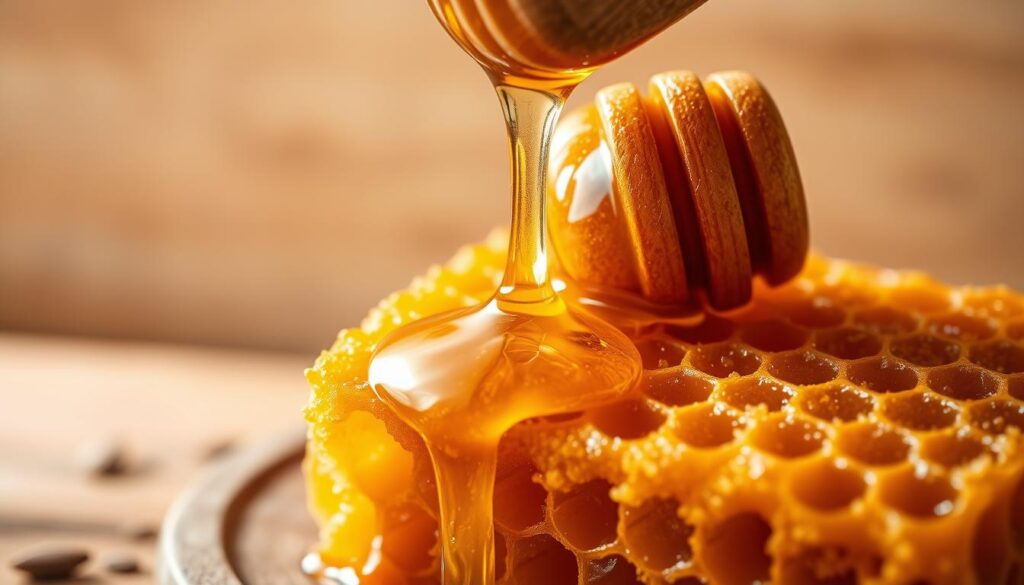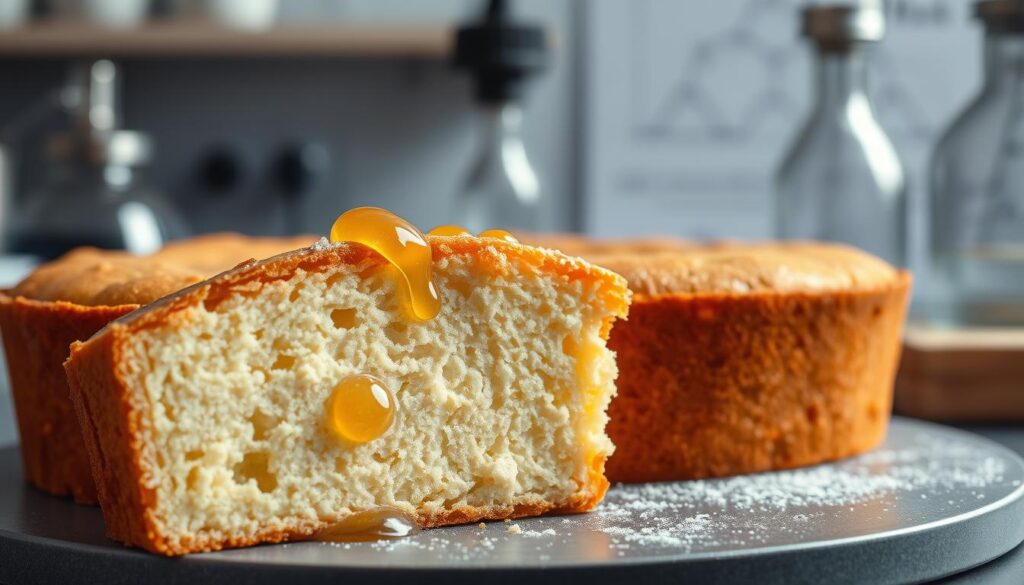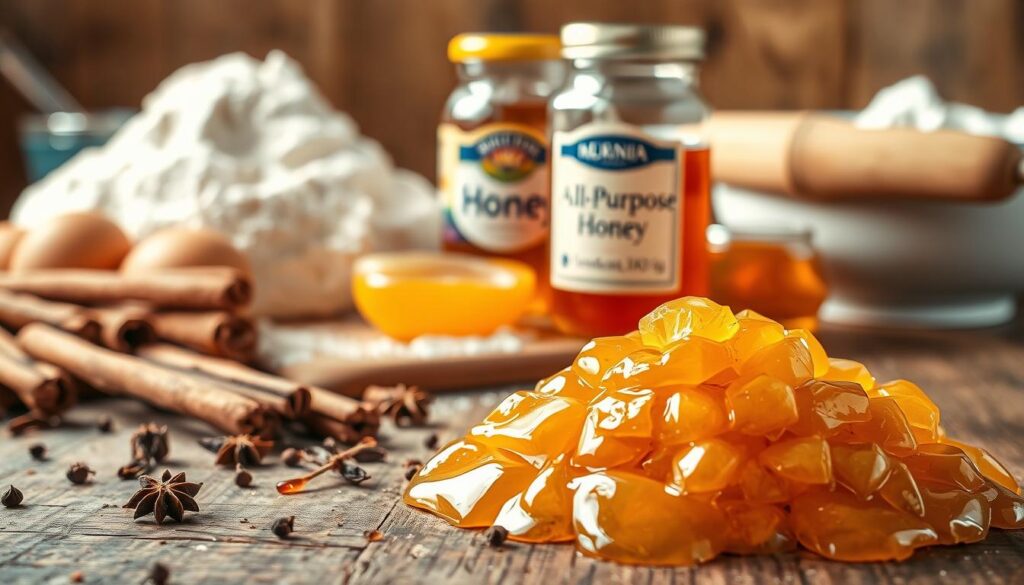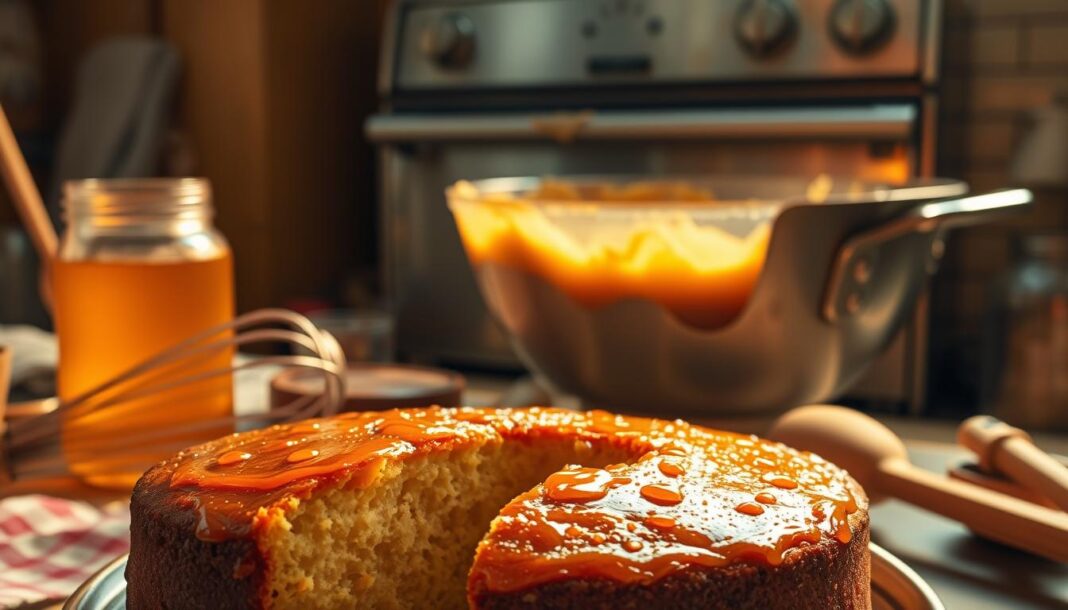Honey cakes have been a beloved treat across various cultures, from the fictional Beorn’s honey cakes in The Hobbit to the traditional Russian Medovik. These cakes are renowned for their rich flavor and moist texture, characteristics that are largely attributed to the use of honey as the primary sweetener.
Unlike traditional cakes that rely on sugar, honey cakes derive their distinctive traits from the complex composition of honey. The interaction between honey and other ingredients creates a unique moisture retention system, keeping these cakes fresh for longer. In this guide, we’ll explore the science behind these delightful treats, covering the chemistry, ingredient selection, and baking techniques that make honey cakes so special.
Key Takeaways
- Understanding the science behind honey cakes elevates your baking results.
- The complex composition of honey affects both taste and texture.
- Honey cakes have a rich history across multiple cultures.
- The unique moisture retention system keeps cakes fresh longer.
- We’ll break down the chemistry and techniques for perfect honey cakes.
Understanding the Magic of Honey in Baking
Honey, with its over 200 compounds, brings a depth of flavor to cakes that is hard to achieve with refined sugar alone. This complexity is what makes honey a unique ingredient in baking, contributing not just sweetness but a rich, nuanced taste.

How Honey Affects Cake Texture and Moisture
Honey’s impact on cake texture and moisture is significant. It retains moisture due to its hygroscopic properties, keeping cakes fresh for longer. The natural acidity in honey also interacts with leavening agents, affecting the cake’s rise and texture.
- Honey’s hygroscopic properties help retain moisture in cakes.
- The acidity in honey (pH between 3.4 and 6.1) can affect the cake’s rise by interacting with leavening agents.
- Using honey can result in a denser cake compared to using sugar, due to its complex composition.
The Flavor Profile: Why Honey Makes Cakes Special
The flavor profile of honey is complex, with over 200 different compounds contributing to its taste. When heated during baking, these compounds intensify, creating a more pronounced honey flavor in the finished cake.
- Different honey varieties (wildflower, buckwheat, clover) impart distinct flavors to cakes.
- The Maillard reaction occurs more readily with honey than with sugar, creating additional flavor compounds.
- Using a full cup of honey in a honey cake recipe ensures that the honey flavor remains prominent.
By understanding how honey affects both the texture and flavor of cakes, bakers can harness its unique properties to create delicious and complex honey cakes.
The Chemistry of Honey Cakes
Delving into the chemistry of honey cakes reveals the secrets behind their texture, flavor, and overall appeal. The unique properties of honey play a crucial role in this process.
Honey vs. Sugar: Chemical Differences and Baking Impact
The chemical composition of honey differs significantly from sugar, impacting the final product in several ways. Honey’s natural acidity and moisture content contribute to its distinct baking properties. Unlike sugar, honey contains enzymes and minerals that can affect the chemical reactions during baking.
How Honey Interacts with Other Ingredients
Honey’s interaction with other ingredients is a complex process. It reacts with baking soda to produce carbon dioxide, causing the cake to rise. The mixture of honey with other ingredients also affects the final texture and flavor profile.

The Role of Acidity and pH Balance
The natural acidity of honey, with a pH between 3.4 and 6.1, affects the chemical leavening process. This acidity reacts with alkaline baking soda to produce carbon dioxide bubbles, helping the cake rise. Understanding the pH balance in your recipe is crucial for achieving the right texture.
- The acid-base reaction between honey and baking soda creates leavening and affects the final flavor profile.
- Different honey varieties have varying pH levels, subtly affecting how they interact with leavening agents.
- A careful balance of baking soda and baking powder is necessary to account for honey’s acidity.
By understanding these chemical interactions, we can better control the outcome of our honey cake recipe, resulting in a more tender crumb and a richer flavor.
Essential Ingredients for Perfect Honey Cakes
The foundation of a great honey cake lies in its ingredients, which we will explore in detail. When it comes to baking, the quality and choice of ingredients are paramount. We have found that using the right combination of ingredients is crucial for achieving the perfect texture and flavor.
Selecting the Right Type of Honey
The type of honey used in honey cakes significantly impacts the flavor profile. We recommend using high-quality, pure honey that complements the other ingredients. For instance, a mild honey like clover or alfalfa works well for a subtle honey flavor, while a stronger honey like buckwheat can add a robust flavor dimension.
Flour, Leavening Agents, and Spices
The dry ingredients, including flour, leavening agents, and spices, play a crucial role in the structure and flavor of the cake. We often use a combination of all-purpose flour and a touch of spice, such as cinnamon or nutmeg, to add depth. Leavening agents like baking powder or baking soda help the cake rise, creating a light and airy texture. For more complex recipes, you can explore other historical recipes like those inspired by Game of Thrones, which often feature unique spice blends.
Fats and Liquids: Creating the Ideal Balance
The balance of fats and liquids is critical in honey cake recipes. We often combine butter and oil to achieve the perfect balance of flavor and moisture. Eggs add structure and richness, while milk or hot milk helps to thin the honey and create a workable batter. The ratio of liquids to dry ingredients is particularly important, as honey contributes significant moisture to the cake. Using room temperature eggs and whole milk enhances the overall texture and freshness. When measuring ingredients, accuracy is key; using the right cup measurements ensures consistency. A cup of flour, for instance, should be measured correctly to maintain the right balance.

Mastering Honey Cake Techniques
The art of crafting perfect honey cakes involves several key techniques that we will explore in detail. Mastering these methods can elevate your baking and result in deliciously complex desserts.
The Hot Milk Method for Fluffy Texture
The hot milk method is a technique used to create a fluffy and tender crumb in honey cakes. By slowly pouring hot milk into the batter, we create a smooth, even texture that is characteristic of high-quality cakes. This method involves heating the milk to just below boiling point and then gently incorporating it into the other ingredients, ensuring that the mixture remains stable and doesn’t curdle.
Twice-Baked Honey Cakes: Tips and Tricks
Twice-baking is another technique that can enhance the texture and flavor of honey cakes. The process involves baking the cake once, then allowing it to cool before baking it again at a lower temperature. This method can help to dry out the cake slightly, intensifying its flavor and creating a unique texture. To achieve the best results, it’s crucial to monitor the cake’s temperature and adjust the baking time accordingly.
Layered Honey Cakes: The Russian Medovik Approach
The Russian Medovik is a classic example of a layered honey cake, consisting of multiple thin layers of honey-infused cake with a creamy filling. To create this dessert, the dough is rolled thin and baked on parchment paper on a baking sheet. The layers are then stacked with filling between each layer. The cake needs to rest overnight to allow the layers to soften.
Some key tips for making a successful Medovik include:
- Maintaining the dough at room temperature to prevent it from becoming too sticky or cracking when rolled.
- Baking the layers until they are lightly browned to achieve the perfect texture.
- Using a combination of sour cream and dulce de leche for the filling to create a tangy-sweet complement to the honey-forward cake layers.
By mastering these techniques and understanding the importance of honey in honey cakes, you can create stunning and delicious desserts that are sure to impress.
Conclusion: Perfecting Your Honey Cake Journey
As we conclude our journey through the world of honey cakes, it’s clear that mastering this ancient dessert form requires a blend of science, technique, and artistry. We’ve explored the intricacies of honey as an ingredient, from its impact on cake texture and moisture to its unique flavor profile.
By understanding the chemistry behind honey cakes and experimenting with different honey varieties, you can create your own signature recipes. Techniques like the hot milk method, twice-baking, and the layered Medovik approach offer a range of possibilities for crafting the perfect honey cake.
To achieve the best results, remember that honey cakes often taste better after resting for a day or two, allowing the flavors to meld and develop. Proper storage is also essential – keep your cake in an airtight container at room temperature for up to three days, or refrigerate for longer storage of up to a week. With practice and patience, you’ll be able to perfect your baking skills and create delicious honey cakes that showcase the unique properties of honey and other key ingredients.


